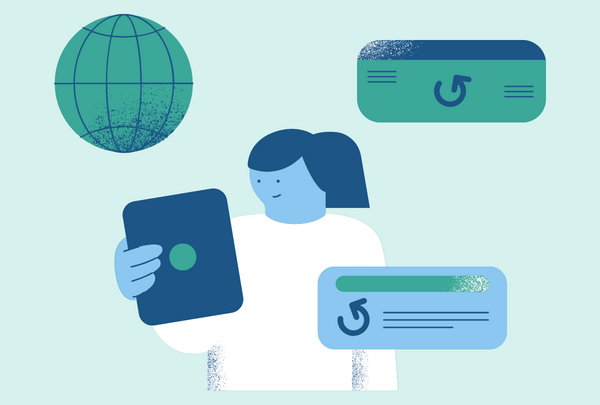Team Iteration Review: Mastering the Art of Product Demo
By Team Lean Agile Intelligence

Mastering the Art of Product Demo
A Team Iteration Review or product demo aims to receive feedback on the increment of value from the team’s key stakeholders. It allows everyone to inspect and adapt based on new learnings. The review should occur at the end of the Iteration, with a broad audience, and focus on demonstrating the team's accomplishments rather than presenting PowerPoints and metrics. It is also a fantastic opportunity for team members to speak directly with key stakeholders and share what’s holding them back and what they are learning.
In this post, we discuss the benefits and best practices of a Team Iteration Review. Following the foundational techniques, such as sending out a compelling agenda, showcasing the most compelling PBIs, and inviting the right stakeholders, help ensure a successful review. If you are interested in the holistic view of your team’s current process status, you can take our free agile assessment for Team Agility.
Team Iteration Review and The Learning Journey
At Lean Agile Intelligence, we recognize Team Iteration Review as the team's ability to inspect the outcome of an iteration, solicit feedback, and determine future adjustments. We divided the learning journey into 4 different stages: Developing, Emerging, Adapting, and Optimizing. In the following sections, we will discuss each stage in detail as well as provide practical tips and techniques to help you strengthen your skills in this area.

Source - How to host an effective product demo to boost sales
Developing
Teams “developing” an understanding of the value of a Team Iteration Review and adopting the foundational techniques should focus on the following improvements:
-
The What: Team Iteration Reviews occur at the end of the Iteration (i.e., Sprint)
-
The How: The Team Iteration Review is a core agile event. Each event should happen on the same cadence. The last event of an Iteration is the retrospective, which inspects and adapts the team’s process and delivery. The Team Iteration Review occurs before the retrospective, and its intent is to inspect and adapt on the increment of value, such as a product or service.
-
-
The What: The team is introduced and provided the opportunity to share their Iteration challenges and leanings.
-
The How: Not only is the Team Iteration Review an opportunity to get feedback on the Iteration goal, but it’s also a fantastic opportunity for team members to speak directly with key stakeholders and share what’s holding them back, what they are learning, and have an in-depth conversation that is scheduled on a cadence. This is one reason the entire team must attend the Team Iteration Review if possible, not just the lead facilitator and product owner.
-
- The What: The Team Iteration Review is more focused on demonstrating working software and the team's accomplishments than presenting PowerPoints & metrics.
- The How: In his blog post “Iteration Goals, Are They Important?” Bob Galen describes the value of focusing on demoing tangible completed goals rather than PowerPoint presentations (unless the deliverable is actually a PowerPoint.) To build trust between stakeholders and the team, we should get feedback on real working tested increments of value. Not everything has to be demoed, but the Iteration goal should be prioritized for review.

Emerging
Teams “emerging” beyond the foundational techniques of a Team Iteration Review and embracing it as they become more proficient should focus on the following improvements:
-
The What: A compelling agenda is sent out a week in advance, enticing stakeholders to attend
-
The How: A Team Iteration Review aims to receive feedback on the increment of value from the team’s key stakeholders. To achieve this, we must have the following…
-
Working testing increment of value that meets the definition of done
-
A plan for who and what will be demoed.
-
Attendance by key stakeholders
-
Engagement between the team and key stakeholders.
-
-
The How: The lead facilitator should create a facilitation guide, more details can be found in the book
”The Secrets of Facilitation” by Michael Wilkinson. In a nutshell, we want to achieve the maximum ROI for a Team Iteration Review and have people excited when they leave to attend the next one. This facilitation guide will help craft a compelling agenda. -
The How: The product owner or lead facilitator should send out the agenda and include the goal/s that are planned to be reviewed at the event. This way stakeholders can prepare questions and get engaged before attending.
-
-
The What: Showcases the most compelling backlog items (i.e., User Stories) in support of the Iteration (i.e., Sprint) goals.
-
The How: As discussed above, we do not need to review all the work that has been completed, and partial work should be avoided at the Team Iteration Review unless feedback is critical at that moment. The Iteration goal should be the focus, and work should be prioritized and timeboxed. In addition, the team should discuss at Iteration planning what will likely be demoed and “how” it will be demoed. This way, the team can ensure the work is in the correct environment and ready to go before the Team Iteration Review. Using metrics like the burn-down chart and the scrum board, the team adjusts the Team Iteration Review plan based on what will be accomplished.
-
-
The What: Stakeholders from all levels attend and are highly engaged.
-
The How: Regarding stakeholders, it should be noted that the Product Owner is not considered a stakeholder. The Product Owner is a member of the scrum team, gives feedback and approves work as necessary throughout the Iteration, and helps set expectations with external stakeholders prior to the Team Iteration Review. Its the responsibility of the lead facilitator to ensure the event is successful and engaging. Inviting the right stakeholders and preparing the techniques for engagement will help make the Team Iteration Review. This blog post details tips for effective remote facilitation.
-
* * * * * *
"The Iteration goal should be the focus, and work should be prioritized and timeboxed."
* * * * * *
Adapting
Teams “adapting” the Team Iteration Review to extract the full benefit should focus on the following improvements:
-
The What: The team connects the dots for the audience by discussing the vision, roadmap, budgets, and state of the team backlog.
-
The How: Product Owners should come prepared to the Team Iteration Review with “big picture” items such as vision, roadmap, goals, and a forecast for the future. Everyone on the team should have a shared understanding of the bigger picture and feel confident to discuss it with external stakeholders. The Team Iteration Review should begin with a discussion about these items as needed depending on the current context.
-
-
The What: Towards the end of the Team Iteration Review, the team and stakeholders collaborate on what to do next, and the team backlog is adjusted as necessary.
-
The How: The output of a Team Iteration Review is a “potentially revised product backlog.” In practice, this could mean new product backlog items, changes to existing backlog items, de-prioritization, or even removal of backlog items. This output comes via conversations between the stakeholders and the entire scrum team.
-

Source - What makes a good sprint/iteration review?
Optimizing
Teams “optimizing” the knowledge sharing of the Team Iteration Review learnings across the enterprise should focus on the following improvements:
-
The What: The Team Iteration Review is set up like a bazaar where team members converge and diverge so stakeholders can focus their attention on relevant areas
-
The How: Set up a physical or virtual space for the team iteration review, similar to a bazaar, where team members can showcase their work. This space should be easily accessible and visible to all stakeholders and should encourage interaction and collaboration.
- Type of work to showcase: Encourage team members to display their work in progress during the team iteration review. This could include visual aids such as physical or digital boards, charts, or prototypes. This allows stakeholders to see the work that has been completed and provides a clear visual representation of progress.
- Allow everyone to move around and foster open discussions: Similar to how vendors in a bazaar set up their stalls, allow team members to move around and showcase their work to stakeholders. This encourages collaboration, discussion, and feedback from stakeholders. Members could be explaining the work completed, showcase features, share challenges, and seek feedback. This open exchange of information encourages the convergence of team members and stakeholders' attention on relevant areas and fosters collaboration and continuous improvement.
-
Keep it time-boxed: Just like a bazaar, it's important to keep the team iteration review time-boxed to ensure that it remains focused and efficient. Set a predefined time limit for the review and stick to it, allowing enough time for team members to showcase their work and stakeholders to provide feedback.
- Type of work to showcase: Encourage team members to display their work in progress during the team iteration review. This could include visual aids such as physical or digital boards, charts, or prototypes. This allows stakeholders to see the work that has been completed and provides a clear visual representation of progress.
-
* * * * * *
"Product Owners should come prepared to the Team Iteration Review with “big picture” items such as vision, roadmap, goals, and a forecast for the future."
* * * * * *
Conclusion
In conclusion, the Team Iteration Review or product demo is a core agile event that can improve a team's process and delivery. The review can help build trust between stakeholders and the team and allow everyone to inspect and adapt based on new learnings. By following the foundational techniques and adapting the review to extract the full benefit, teams can achieve maximum ROI and have people excited to attend the next one. For a thorough assessment of your team's current process status, we offer a free agile assessment for Team Agility that you can take advantage of.